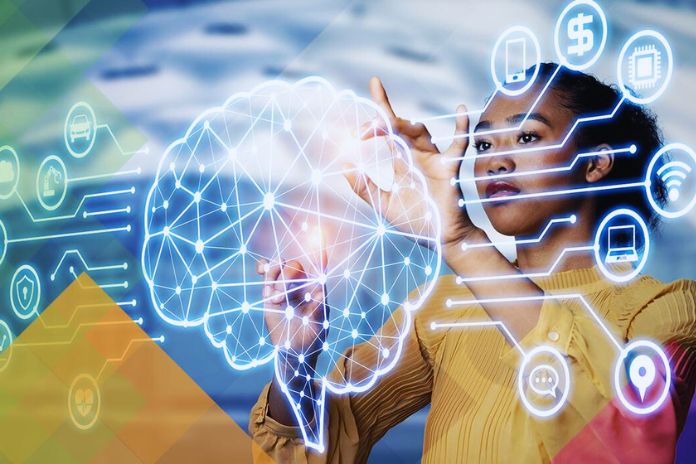How It Works, Where It Is Used, & Relationship Between RPA & AI
Robotic automation doesn’t just incorporate actual robots, be that as it may, but most importantly, programming robots: how it works, where it is utilized, and the connection between RPA and artificial intelligence. Not simply androids or mechanical arms: automated mechanization is progressively portrayed by the utilization of bots, robot programming that permits you to increment efficiency and diminish the typical execution season of monotonous undertakings.
A developing business sector: India where the information from the Artificial Intelligence Observatory of the Polytechnic of Milan, delivered during the meeting “Artificial Intelligence: the time of execution,” affirms that in India, the artificial intelligence market has arrived at 500 million euros in 2022, recording an increment of 32% contrasted with 2021.
This addresses an eminent increment, taking into account that in 2018, the sum was just 210 million euros. As indicated by the most recent information from the Artificial Intelligence Observatory of the Polytechnic College of Milan, chatbots and remote helpers are utilized by 81% and 83% of clients. Savvy Mechanical Cycle Robotization covers 9% of the Indian computer-based intelligence market.
What Is Robotic Automation
Robotic automation is the use of robots to automate manufacturing processes. In particular, today, it is possible to integrate the different phases of the production chain:
- Cartesian robots, which move only in straight lines along the three axes of the plane;
- RFI anthropomorphic robots, i.e., robotic arms ;
- cobots, collaborative robots that share the workspace with humans;
- AGV – automated guided vehicles, automatically guided vehicles on a predefined route;
- AMRs – Autonomous Mobile Robots, mobile robots that optimize their path in real-time;
- to APPS – Automated Picking Packaging Systems, the automated picking and packaging systems.
But be careful: not all robots require a physical counterpart.
Software Robots: What They Are
In particular, if by robotic automation we mean the Italian translation of RPA – robotic process automation, this refers exclusively to intelligent software, the so-called “software robots” or bots, capable of interacting in real time and executing repetitive tasks automatically.
The term “software robot” was born to distinguish between software-based and physical systems, which are not run on host devices but installed in individual automatons. For example, the “robot lawyer” or the “robot judge” are not humanoids but software capable of drafting legal documents or comparing sentences and regulations following machine learning.
Robotic Automation: How It Works
Robotic automation involves the integration of robots in one or more phases of the production chain. Depending on the needs, the objectives to be achieved, the implementation times, and the available resources, digital automation projects can differ enormously. Therefore, in the context of RPA, software robots’ exclusive use, a distinction is made between attended or unattended RPA or assisted or independent RPA.
Assisted RPA is robotic automation in processes defined by human-bot collaboration. Conversely, independent RPA works autonomously. Chatbots or virtual assistants fall under assisted RPA because they can perform tasks within human interaction. Independent bots instead run entire processes autonomously, allowing for end-to-end and scalable automation. While chatbots need to be activated by users, independent bots activate as scheduled and follow their process to completion.
Robotic Automation: Where It Is Used
Cartesian robots can be used in pick and place and packaging automation. Cobots can automate precision assembly, palletizing, quality control, and machine tending operations. AGVs for handling and transporting goods, AMRs for storage, and APPS for picking. As for actual RPA, or the use of software robots, some of the most widespread examples of possible use include:
- Website scraping, i.e., the collection, processing, synthesis, and display of specific data from sites of interest;
- Processing of pay slips, extracting details from time sheets;
- Identification of banking frauds, cross-referencing available data;
- Data cleansing;
- Processing of orders to be inserted into the repositories at the time of shipment or as complete monitoring from insertion to the cart to after-sales;
- Drone control;
- Management of requests for credit card activation;
- Processing of incoming emails, with automatic splitting and labeling;
- Data transfer between systems once the source and destination have been set;
- Automatic processing of forms;
- Automatic generation of insurance premium renewals and compensation requests;
- Account statement reconciliation;
- Generation of shipping notifications;
- Automatic registration of access to healthcare facilities.
What Is The Relationship Between RPA And Artificial Intelligence?
Most of the software robots on which RPA is based are incapable of learning: they repeat the same, often simple, task at high speed. However, RPA and AI are closely related: AI enables “upstream” and “downstream,” i.eAI integrates learning that makes the rules on which RPA is based work better. Examples of this are natural language processing (NLP) or computer vision associated with bots.
In particular, two crucial growing trends are cognitive acquisition based on AI algorithms, which collects heterogeneous data and transforms it into a structured format so RPA can proceed, and process orchestration, which coordinates dynamic case management and collaboration between machines and people. The Artificial Intelligence Observatory of the Polytechnic University of Milan has defined a three-level framework for the integration between RPA and AI:
Programmed RPA
Zero integration between RPA and AI. RPA is programmed based on structured data and defined repetitive tasks.
AI-Assisted RPA
There is little integration between RPA and AI. AI serves to support robots in some specific activities, especially if they are not programmable.
AI-Driven RPA Or BPM
Ai-driven RPA is the RPA with solid integration with AI. It is also called Intelligent Business Process Management (BPM) because it allows you to optimize processes and paths.
Read Also: Business Software Purchasing Trends Heading Into 2023?
Share this content:











Post Comment